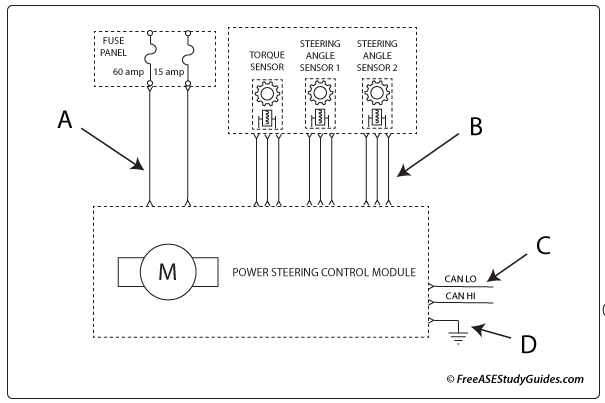ASE A4 Steering and Suspension Practice Test
56. A vehicle's front wheels have excessive positive camber on one side and excessive negative camber on the other. Which of these is MOST likely causing this condition?
- A. The rear axle has shifted.
- B. The engine cradle has shifted.
- C. Low tire pressure.
- D. Loose tie rods.
57. Technician A says the (SAI) steering axis inclination is built-in by the manufacturer and not adjustable. Technician B says SAI and the caster angle affect the steering wheel return to center. Who is correct?
- A. Technician A
- B. Technician B
- C. Both A and B
- D. Neither A or B
58. The compressor of an air suspension system runs continuously. All of the following statements are correct EXCEPT:
- A. Disable the system before lifting the vehicle.
- B. Use soapy water to search for leaks.
- C. The airbag compressor's relay is stuck open.
- D. Use a scanner to retrieve fault codes.

59. Technician A says an open at point A in the diagram above will result in an inoperative power steering system. Technician B says resistance at point C will result in the power steering control module losing communication with the steering angle sensor. Who is correct?
- A. Technician A
- B. Technician B
- C. Both A and B
- D. Neither A or B
60. The steering column squeaks while making sharp turns. Technician A says this could be caused by the clockspring. Technician B says this could be caused by the steering column bearings. Who is correct?
- A. Technician A
- B. Technician B
- C. Both A and B
- D. Neither A or B